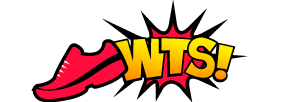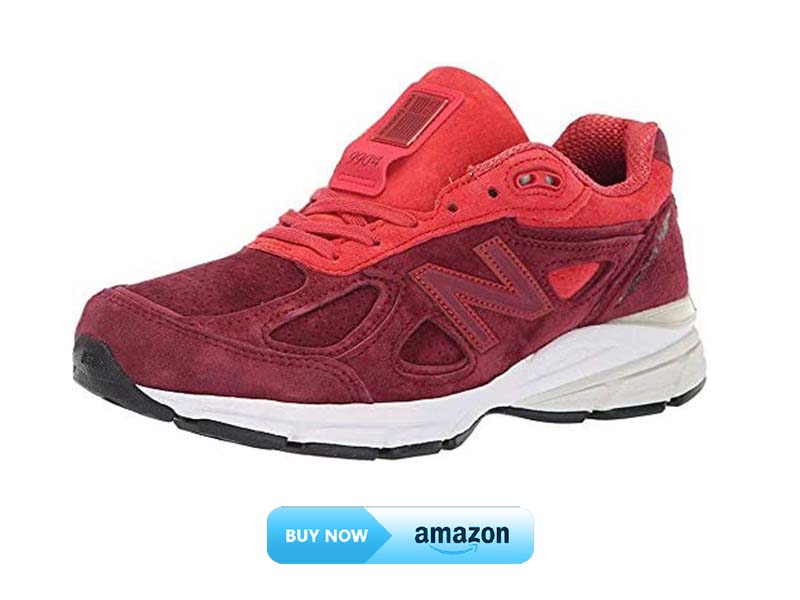Degenerative disc disease (DDD) is a condition in which the discs between the vertebrae of the spine deteriorate. This can lead to pain, numbness, and weakness in the affected area.
While there is no cure for DDD, there are ways to manage the pain and improve the quality of life. One way to do this is to wear the best shoes for degenerative disc disease.
Orthopaedic shoes are designed to support and stabilize the foot and ankle. This can help to reduce pain and prevent further injury. Many orthopaedic shoes are available, But which is better for you?
Today I have reviewed the Top-rated 5 best walking shoes. Whether you’re dealing with back pain or simply looking for shoes that will keep you comfortable throughout the day, there’s sure to be an option on my list that will meet your needs.
Contents
Understanding Degenerative Disc Disease
Degenerative disc disease is a common condition that affects the spine. It occurs when the discs between the vertebrae start to wear down, leading to pain and discomfort for the individual. Understanding this condition is essential for those looking for the best shoes to help alleviate symptoms and make daily life more manageable.
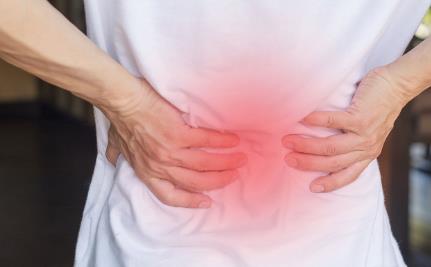
Explaining Different Concepts Related To Degenerative Disc Disease
- Degenerative disc disease is a condition that causes the spinal discs to break down over time, leading to pain and discomfort.
- It is most commonly caused by age-related changes in the discs, although other factors such as genetics and injury can also contribute to its development.
- Disc degeneration can occur in any part of the spine, although it is most common in the lower back and neck.
Symptoms And Signs To Watch For
- Common symptoms of degenerative disc disease include pain in the neck, back, and legs, as well as stiffness and limited mobility.
- Individuals may also experience tingling and numbness in the affected areas.
- Pain and discomfort often worsen with extended periods of sitting or standing and may improve with movement and exercise.
The Impact Of Degenerative Disc Disease On An Individual’S Daily Life
- Degenerative disc disease can have a significant impact on an individual’s daily life, often limiting their ability to perform everyday activities.
- Activities such as walking, lifting, and bending may become increasingly difficult and painful.
- Ongoing pain and discomfort can also have a negative effect on an individual’s mental health and wellbeing.
When it comes to finding the best shoes for degenerative disc disease, it is essential to choose footwear that provides adequate support while also being comfortable enough to wear for extended periods. By understanding this condition’s key concepts, symptoms, and impact, individuals can make informed decisions about their footwear choices and improve their overall quality of life.
Why Shoes Matter When You Have Degenerative Disc Disease
Shoes play a vital role in maintaining good posture and supporting the lower back. For individuals with degenerative disc disease, wearing the right shoes is essential to prevent further discomfort and pain. In this section, we’ll discuss why shoes matter when you have degenerative disc disease, along with tips for choosing suitable shoes that can alleviate pain and discomfort, and the role of orthotics in reducing pressure on the lower back.
How Shoes Affect The Condition And Progression Of Degenerative Disc Disease
Degenerative disc disease is a painful condition that affects the discs between the vertebrae. It can cause stiffness, soreness, and radiating pain in the lower back. The shoes you wear can significantly affect your condition, and choosing the wrong ones can worsen symptoms and even contribute to the disease’s progression.
Here are some key points to bear in mind regarding shoes:
- Shoes that do not provide adequate support can exacerbate the condition by causing poor posture, increasing the load on the lower back, and putting pressure on the lumbar spine.
- High heels can strain the lower back by tilting the pelvis forward and altering the natural curvature of the spine. They also increase pressure on the balls of the feet, leading to foot problems.
- Shoes with worn-out soles or lacking cushioning can cause shock to travel up the spine and lead to further pain and discomfort.
Tips For Choosing Shoes That Can Alleviate Pain And Discomfort Associated With The Disease
Choosing the right shoes can ease the pain and discomfort associated with degenerative disc disease. Here are some pointers to keep in mind when selecting shoes:
- Look for shoes that provide ample support and cushioning. Stability shoes or those designed for individuals with low arches can provide extra support.
- Choose shoes with a low heel, or better yet, flats. If you must wear heels, opt for a wider and more stable heel with a maximum height of two inches.
- Go for shoes with a soft and flexible sole. If possible, try shoes with shock-absorbing soles or insoles to reduce the shock on the spine.
- Consider shoes with a snug fit to prevent slippage or rubbing. Loose shoes can cause instability and increase the risk of falls.
The Role Of Orthotics In Reducing Pressure On The Lower Back
Orthotics is a valuable tool that can help reduce pressure on the lower back by improving alignment, reducing shock, and providing support. These are some of the ways orthotics can assist in managing degenerative disc disease:
- Orthotics can help distribute pressure evenly across the feet, knees, hips, and back by improving alignment. This can reduce pain and discomfort in the lower back.
- Custom-made orthotics can offer personalized support to specific areas of the foot, depending on your condition.
- Orthotics may help reduce shock by absorbing it before it reaches the spine.
Choosing suitable shoes and using orthotics can help alleviate pain, discomfort, and reduce the progression of degenerative disc disease. It’s essential to seek medical advice on the best shoes and orthotics for your condition to manage it better.
Characteristics Of Shoes Suitable For Degenerative Disc Disease
Individuals who suffer from degenerative disc disease need to ensure that they have the right shoes to provide them with relief and support. The right shoes can help to reduce pressure on the spine and provide individuals with more comfort, mobility, and flexibility.
Therefore, it is essential to pay attention to the following characteristics when choosing shoes:
Comfort Features That Provide Relief For Individuals With Degenerative Disc Disease
Shoes should come with specific comfort features that can provide relief to individuals suffering from degenerative disc disease. Some of those features are:
- Cushioning: Shoes that have cushioning can help to reduce the impact on the feet and spine, providing additional comfort.
- Breathability: Good ventilation can maintain a cool and dry environment in the shoes, which can help prevent foot injuries, blisters, and infections.
- Flexibility: Shoes with sufficient flexibility allow for natural foot movements, which can reduce pressure on the spine and offer better mobility.
- Shock-absorption: Shock-absorbing materials minimize the force experienced by the feet, reducing the strain on the spine, and providing comfort.
Materials That Should Be Avoided Or Recommended For Shoes
The right materials can make a significant difference in terms of support, comfort, and durability when it comes to shoes. The following should be avoided:
- Stiff materials: Shoes that are made with stiff materials usually lack the flexibility required to support foot movements and might compromise the stability of individuals with degenerative disc disease.
- High heels: Avoid high heels, which can increase pressure on the spine and aggravate pain and discomfort.
- Pointed-toe shoes: Narrow toe boxes can cause friction and pressure on the feet, exacerbating any pain in the affected areas.
The following are recommended:
- Soft, flexible materials: Materials like leather and mesh can provide flexibility, breathability and a comfortable fit.
- Orthotics: These are custom inserts that can help to correct imbalances and offer support to individuals with degenerative disc disease.
Factors To Consider When Choosing Shoes Such As Weight, Size, And Arch Support
When choosing shoes, it is essential to consider the following factors to guarantee comfort, mobility, and relief:
- Weight: Heavy shoes can cause additional strain on the spine and increase the pressure on the feet. Lightweight shoes can reduce pressure, allowing for better movement and comfort.
- Size: It is essential to ensure that shoes fit correctly to avoid foot injuries and unnecessary pressure.
- Arch support: Shoes that offer ample arch support can help to distribute weight evenly, reducing pressure on the spine, and providing better stability.
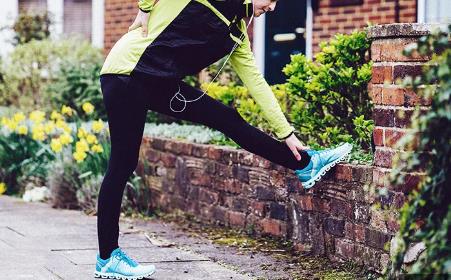
What Are The Best Shoe For Degenerative Disc Disease?
Degenerative Disc Disease (DDD) is a condition that affects the spine, causing pain and discomfort. Shoes play an important role in managing the symptoms of DDD by providing support, stability, and cushioning.
The New Balance 990v4 is a great choice for those with degenerative disc disease. It offers excellent arch support and cushioning, and is available in both men’s and women’s sizes.
Here are some of the best shoes for degenerative disc disease:
New Balance Made in US 990 V4 Shoe
The New Balance 990 V4 Shoe is a high-quality running shoe made just for women. This sneaker has a classic look that has been updated with new features, making it both stylish and useful.
The upper is made from a suede and mesh mix, making it both durable and breathable. The shoe is also comfortable because it has a soft lining, padded collar, and tongue.
The ENCAP technology that is unique to New Balance is used to make the midsole, which gives great cushioning and support. This is made even better by the blown rubber outsole, which has a great grip and lasts a long time.
Overall, the New Balance Made in US 990 V4 shoe is a great choice for runners who want a high-quality, long-lasting running shoe that is also comfortable. It’s also a plus that it’s made in the US, for those who want to buy products made in the US.
What Are The Key Features Of New Balance Us 990 V4 Shoes?
The New Balance Women’s Made in US 990 V4 shoe is a high-quality athletic shoe that is made in the United States. Some key features of these shoes include:
- Superior cushioning: The shoe features a dual-density collar foam and ENCAP midsole technology that provides excellent cushioning and support.
- Breathable materials: The shoe’s upper is made from suede and mesh materials that allow for breathability and airflow to keep your feet cool and dry.
- Stability and support: The shoe features a traditional lace-up closure that provides a secure fit and a TPU heel clip that helps to stabilize the heel and prevent slippage.
- Durable construction: The shoes are made with high-quality materials and is designed to withstand heavy wear and tear.
- Classic style: The shoe has a classic look that is both stylish and versatile, making it a great choice for various activities.
Overall, the New Balance Women’s Made in US 990 V4 Shoe provides excellent cushioning, support, and durability and is made with breathable materials to keep your feet comfortable and cool.
Advantages of Using New Balance Made in US 990 V4 shoes
Using New Balance Women’s Made in US 990 V4 shoes has a number of benefits, such as:
- Comfort: The New Balance Women’s Made in US 990 V4 shoes are made with excellent cushioning and support, so they are very comfortable to wear for long periods of time. They have a soft, breathable upper and a strong sole, so they fit well and give your feet a lot of support.
- Durability: These shoes are made in the United States with high-quality materials, which makes them very long-lasting and durable. They are made to last in rough conditions and will keep their shape and support even after being used for a long time.
- Stability: The New Balance Women’s Made in US 990 V4 shoes have a unique design that makes them very stable, which is especially important for runners and athletes. They have a strong sole and a snug fit that keep you from getting hurt and give your foot a stable place to stand.
- Style: These shoes come in a lot of different colours and styles, so you can find a pair that fits your style. They can also be worn for a wide range of activities, like running, walking, and just hanging out.
- Support: These shoes were made with women’s needs in mind and give your feet a lot of support. They have a reinforced heel and midsole that help to prevent overpronation and provide arch support, making them an excellent choice for people with flat feet or other foot conditions.
Overall, the New Balance Women’s Made in US 990 V4 shoes are a great choice for anyone who wants a high-quality, long-lasting pair of shoes that is also comfortable. They are a great investment for anyone who wants to take care of their feet because they offer great support, stability, and style.
Disadvantages of Using New Balance Made in US 990 V4 shoes
some general disadvantages of using the New Balance Women’s Made in US 990 V4 shoes can be:
- Price: These shoes are relatively expensive compared to other running shoes, which may not fit everyone’s budget.
- Weight: Some users may find these shoes to be too heavy for running or walking.
It is essential to note that these are general drawbacks and may not apply to everyone. People’s experiences with the shoes can vary based on their preferences, foot size, shape, and running style.
Saucony Guide 10 Running Shoe
The Saucony offers a women’s specific stability running shoe, the Saucony Women’s Guide 10 Running Shoe. The top is made of a mesh material that is both flexible and breathable, and it has a seamless design.
This helps to eliminate irritation and ensures a comfortable fit. The shoe also features an Everun topsole that cushions the foot and returns some of the energy it expends, while the medial post located in the shoe’s midsole assists with correcting overpronation.
In addition to this, the outsole of the Saucony Women’s Guide 10 Running Shoe is constructed from long-lasting rubber and features a Tri-Flex design, which offers both flexibility and traction on a variety of terrains.
In general, the Saucony Women’s Guide 10 Running Shoe is a wonderful option for female runners searching for a stability shoe that provides a comfortable ride and plenty of support.
But, before making a purchase, it is essential to try on different pairs of shoes to determine which ones provide the most comfort and the best fit.
What Are The Key Features Of Saucony Guide 10 Running Shoe?
Some key features of this shoe may include:
- Stability: Guide 10 is designed to provide stability for runners who overpronate. The shoe features a medial post to help guide the foot into a more neutral position.
- Cushioning: The shoe’s EVERUN topsole and SRC Landing Zone in the heel provide cushioning and shock absorption for a comfortable ride.
- Flexibility: The shoe’s Tri-Flex outsole enhances flexibility and improves traction.
- Breathability: The Guide 10 has a breathable mesh upper that helps to keep feet cool and dry.
- Lightweight: The shoe’s lightweight construction makes it a good option for runners who prioritize speed and agility.
- Comfortable fit: The shoe’s FORMFIT performance contoured footbed provides a comfortable and personalized fit.
- Durability: The Guide 10 is designed to be durable and withstand the wear and tear of running.
Advantages of Using Saucony Guide 10 Running Shoe
- The Saucony Women’s Guide 10 Running Shoe offers stability and support for overpronators.
- The Everun topsole cushions and returns energy, reducing tiredness and improving comfort during lengthy runs.
- The shoe’s high-abrasion rubber outsole provides durability and grip on tough surfaces.
- The shoe’s designed mesh upper moulds to the foot for a snug, breathable fit.
- Flexibility overlays over-the-top support and structure without adding weight, allowing natural foot movement. and reduce degenerative disc disease.
- The Saucony Women’s Guide 10 Running Shoe comes in many colours for runners that prioritize style and performance.
Disadvantages of Using Saucony Guide 10 Running Shoe
- Tight fit: The Saucony Women’s Guide 10 Running Shoe may be too narrow for broader feet.
- The Saucony Women’s Guide 10 Running Shoe isn’t the lightest, so some runners may find it cumbersome and thick.
- The Saucony Women’s Guide 10 Running Shoe is designed for runners that need extra stability and support, although it may not be suited for minimalist or high-arched runners.
Orthofeet Innovative Shoe
Orthofeet Innovative shoe is designed to provide relief for back pain caused by degenerative disc disease. These therapeutic walking shoes feature arch support, cushioning ergonomic soles, and extended widths to provide comfort and support to people with different foot sizes and conditions.
The Sorrento Brown model is a stylish and versatile option for men who are looking for plantar fasciitis sneakers that can be worn for different occasions. The brown color and design make them suitable for casual and dressy outfits.
Orthofeet shoes are made with innovative features that address the specific needs of people with plantar fasciitis. The arch support system helps to distribute weight evenly and reduce pressure on the heel, while the cushioning sole absorbs shock and provides a comfortable walking experience. The extended widths offer more space and accommodate a wider range of foot sizes.
Overall, Orthofeet Innovative shoes are a great option for people with degenerative disc disease who need comfortable, supportive, and stylish footwear. They can help alleviate heel pain and improve the overall walking experience.
What Are The Key Features Of Orthofeet Innovative Shoe
The Orthofeet Innovative Plantar Fasciitis Sneakers for Men is designed to relieve heel pain caused by plantar fasciitis. Here are some key features of these therapeutic walking shoes:
- Arch Support: The sneakers come with arch support that helps distribute weight evenly and reduces pressure on the plantar fascia, providing relief from pain.
- Cushioning Ergonomic Sole: The shoes have a cushioning ergonomic sole that provides additional support and comfort to the feet while walking.
- Extended Widths: The shoes are available in extended widths to accommodate different foot sizes and shapes, providing a comfortable fit for all.
- Orthotic Insoles: The sneakers come with orthotic insoles that are contoured to provide optimal support and cushioning for the feet.
- Breathable Upper: The upper part of the shoes is made of breathable material that allows air to circulate, keeping the feet cool and dry.
- Lightweight Design: The sneakers are lightweight, making them easy to wear for extended periods without causing fatigue or discomfort.
Overall, the Orthofeet Innovative Plantar Fasciitis Sneakers for Men is designed to provide maximum comfort and support for people with heel pain caused by plantar fasciitis. It also can help to prevent degenerative disc disease.
Advantages of Orthofeet Innovative Shoes
- Orthofeet shoes have an orthotic insole that cushions and supports the foot, reducing discomfort and inflammation.
- The shoes have a molded orthotic insole that provides great arch support for flat feet and high arches.
- The shoes’ wide toe box and soft, non-binding upper contour to the foot for a stable, comfortable fit.
- Non-slip sole. The sneakers’ soles provide exceptional traction, lowering the risk of slips and falls.
- Breathable material. Airflow keeps feet cool and dry in the sneakers.
- Orthofeet sneakers are comprised of durable materials for long-term comfort and support.
Disadvantages of Orthofeet Innovative Shoes
- Some people may experience discomfort or blisters during the break-in period as their feet adjust to the new footwear.
- While the sneakers come in various colors and styles, some people may find them to be less fashionable than other options.
What Type Of Shoes Are Best For Degenerative Disc Disease?
Degenerative disc disease (DDD) is a condition that refers to the deterioration of the discs in your spine. The discs act as cushions between the vertebrae, and when they degenerate, it can lead to pain, stiffness, and other issues.
There is no one-size-fits-all answer to the type of shoes that are best for degenerative disc disease, as the best type of shoe will vary depending on the individual’s specific condition and symptoms.
However, there are a few general tips that can help guide your decision:
- Look for shoes with good arch support: Degenerative disc disease can lead to pain and instability in the feet, so it’s important to find shoes with good arch support. This will help redistribute weight evenly and take pressure off the affected areas.
- Cushioning is key: Because degenerative disc disease can cause pain when walking or standing, it’s important to find shoes with good cushioning. This will help to absorb some of the impacts and protect your feet from further pain.
- Avoid high heels: High heels can worsen knee and leg pain for degenerative disc disease patients. Stick to lower heels or flats to keep your feet comfortable.
- Consider orthotics: You may want to consider orthotics if you’re still experiencing pain despite trying different shoes. These inserts can be placed in your shoes for additional support and cushioning.
- Talk to your doctor: If you still have trouble finding shoes that work for you, talk to your doctor. They may be able to recommend specific brands or types of shoes that can help alleviate your pain.
Example:
If you have degenerative disc disease, you may want to consider orthotic inserts for your shoes. Orthotic inserts can help stabilize your spine and provide additional support.
Considerations in Best Shoes for Degenerative Disc Disease

Degenerative disc disease is a problem with the spine that causes pain, stiffness, and other issues. When looking for shoes for degenerative disc disease, here are the most important things to look for:
Cushioning:
Shoes with good cushioning can help absorb shock and reduce the impact walking has on your spine. Find shoes with thick soles, padded insoles, and materials that absorb shock.
Arch support:
Shoes that support your arches well can help you stand up straighter and put less strain on your lower back. Look for shoes with a footbed that molds to your foot or orthotic inserts.
Stability:
Shoes with good stability can help keep your feet from rolling inward or outward, which can cause your body to be out of balance and put more strain on your back. Look for shoes with a sturdy heel counter and a broad base.
Lightweight and flexible:
Walking takes a lot of energy. Light and flexible shoes can help you use less energy and walk more naturally. Look for shoes made of materials that let air in and let you move freely.
Roomy toe box:
Shoes with a roomy toe box can help relieve pressure on your toes and keep your feet from sliding forward, which can cause your toes to scrunch up and put more pressure on your spine. Look for shoes with a larger space for your toes or a rounded toe.
Ultimately, the best shoes for degenerative disc disease have the right mix of cushioning, arch support, stability, and flexibility to help relieve pain and discomfort and improve your overall posture and gait. It’s also essential to choose shoes that fit well and feel good since shoes that are too tight or loose can worsen your symptoms.
Maintenance And Care Tips For Shoes To Manage Degenerative Disc Disease
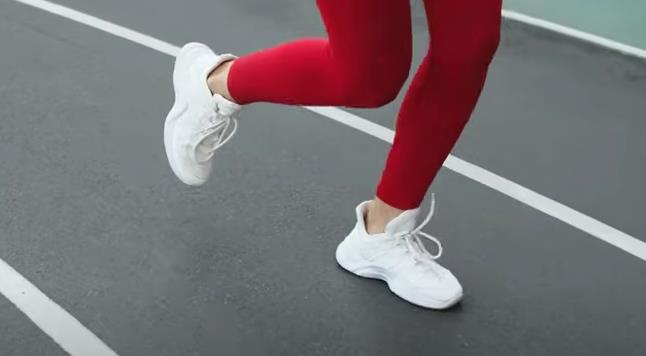
How To Prolong The Lifespan Of Shoes To Continue To Experience Relief From Degenerative Disc Disease
When it comes to footwear for degenerative disc disease, finding the right pair of shoes is crucial. However, ensuring that your shoes remain in good shape for as long as possible is equally important. Here are some tips for maintaining your shoes to get the most out of them:
- Rotate your shoes. Wearing the same shoes every day can lead to excessive wear and tear. To prolong their lifespan, it’s best to rotate through several pairs of shoes.
- Invest in shoe inserts. Custom orthotic shoe inserts can help relieve back pain caused by degenerative disc disease and also provide support to the feet. They can also help to extend the life of your shoes, as they absorb shock and reduce wear and tear.
- Choose high-quality shoes. Investing in high-quality shoes may seem expensive, but it can save you money in the long run. Look for shoes with sturdy soles and a supportive structure.
- Avoid overuse. Walking long distances or excessive exercise in the same shoes every day can lead to wear and tear. Alternate your shoes instead of wearing the same one every day.
The Importance Of Keeping Shoes Clean And Dry To Prevent The Growth Of Bacteria And Fungi
Keeping your shoes clean and dry is essential when managing degenerative disc disease. Bacteria and fungi can build up in damp shoes, leading to fungal infections and other complications. Here are some tips to help keep your shoes clean and dry:
- Allow shoes to air out. After wearing your shoes for an extended period, let them air out before you store them.
- Use moisture-wicking socks. Moisture-wicking socks can help absorb sweat, keeping your feet dry and preventing bacteria and fungi buildup.
- Use a shoe dryer/deodorizer. Shoe dryers can help remove moisture from shoes, preventing the growth of bacteria and fungi. They can also help remove unpleasant odors.
- Regularly cleaning your shoes. Use a soft brush or cloth to clean your shoes regularly to prevent dirt buildup.
Tips For Regular Shoe Maintenance Activities Such As Cleaning And Storing
Regular cleaning and storage of your shoes can prolong their life and ensure that they provide the necessary support for your body. Here are some tips for maintaining your footwear:
- Clean your shoes with a gentle cleaning solution. Use a soft brush to remove dirt and grime from your shoes, or use a damp cloth to wipe them down.
- Avoid drying shoes in direct sunlight or using a heater; they can cause damage to the materials.
- Store shoes in a cool, dry place, away from sunlight and water. Use a shoe tree to help the shoes keep their shape. Avoid keeping shoes in sealed or airtight containers.
By adhering to these maintenance and care tips, you can prolong the lifespan of your shoes and continue to experience relief from degenerative disc disease.
People Asked Related Questions With Answers
Can shoes affect Degenerative Disc Disease?
Yes, shoes can have an impact on Degenerative Disc Disease. Shoes with good support and cushioning can reduce spine stress and help alleviate pain.
Can walking barefoot be bad for Degenerative Disc Disease?
Yes, walking barefoot can be harmful to people with Degenerative Disc Disease. Walking without shoes can increase the pressure on the spine and contribute to back pain. It is best to wear shoes with good arch support and cushioning to reduce stress on the spine.
Can custom orthotics help with Degenerative Disc Disease?
Yes, custom orthotics can be very helpful for people with Degenerative Disc Disease. Custom orthotics can help to provide additional support and cushioning to reduce stress on the spine and alleviate pain and discomfort.
What should I look for in shoes for Degenerative Disc Disease?
When looking for shoes for Degenerative Disc Disease, look for shoes with good arch support, cushioning, and stability. The shoes should be comfortable, fit well, and provide adequate shock absorption to reduce stress on the spine.
Are high heels bad for Degenerative Disc Disease?
Yes, high heels are generally not recommended for people with Degenerative Disc Disease. High heels can place much stress on the spine and contribute to back pain.
Final Thought
Selecting the proper shoes can improve your life if you’re one of the millions with degenerative disc disease. Imagine being pain-free when walking and standing. It’s possible with the appropriate shoes.
According to research and user feedback, degenerative disc disease shoes can improve your quality of life. These shoes reduce spine pressure with better cushioning, arch support, and stability.
These shoes help alleviate pain, improve posture, and boost mobility. Degenerative disc disease shoes have given many consumers a new lease on life.
But shoes alone cannot treat this disease. Nonetheless, they can help manage symptoms and avoid spine injury.
Try degenerative disc disease shoes if you want to take charge of your life and lessen suffering. You can walk confidently, stand tall, and live your best life with the appropriate shoes. But it is better to talk to your doctor before buying. Your spine will thank you.
